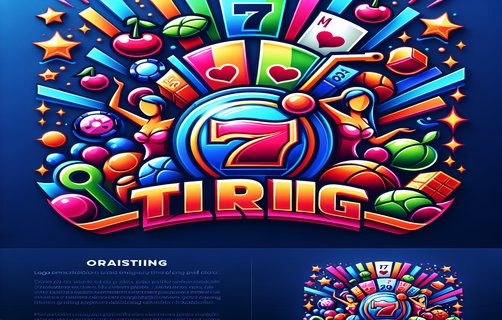Strategic Gaming Insights: Analyzing 3 Patti with Designer's Thinking
The world of gaming, particularly in the realm of chance-based activities like 3 Patti (also known as Teen Patti), presents a fascinating framework for analysis through the lens of designer's thinking. This approach entails understanding user experiences and crafting strategies that elevate gameplay. By examining various components such as 3D slots, reality checks, line bets, live dealer interactions, and bankroll discipline, we can articulate a comprehensive strategy to enhance both enjoyment and potential profitability.
3D Slots: Visual Engagement and User Experience
One of the most engaging aspects of modern online gaming, including 3 Patti, is the integration of 3D slots. These visually interactive elements significantly augment user experience and can influence player choices. The allure of 3D slots lies in their ability to create immersive environments that capture attention while providing opportunities for strategic decision-making. By incorporating 3D graphics, designers can effectively engage players and provide a dynamic playing environment, appealing to both novice and serious gamblers alike.

Reality Checks: Promoting Responsible Gaming
In an era where gaming can easily lead to addiction, implementing reality checks is crucial. Designers should integrate features that prompt players to reflect on their gaming activities, such as notifications regarding time spent or funds wagered. These checkpoints are not merely regulatory necessities but can also enhance player satisfaction by promoting a balanced approach to gambling. By providing a structured framework that encourages awareness, players can enjoy gaming in moderation while minimizing financial risks.
Line Bets: Strategic Decision-Making
Understanding line bets is essential for effective strategy development in 3 Patti. Players must analyze the potential outcomes of varying bet lines and their implications on total payouts. By examining past trends and recognizing patterns, players can make informed decisions. Designer thinking can play a role here by presenting statistical data visually, making it easier for players to comprehend their choices and potential returns. This aligns game mechanics with strategic play, fostering player engagement through informed decision-making.
Live Dealer Interaction: Building Community and Trust
Live dealer games have revolutionized the online gambling experience by bridging the gap between virtual gaming and real-world interaction. The presence of a live dealer not only adds authenticity but also enhances player engagement through social interaction. Designer thinking emphasizes the importance of community; thus, implementing features that allow for player-to-player communication can augment the experience. This interaction transforms the solitary act of gambling into a community event, reinforcing social bonds among players and creating an enriched gaming atmosphere.
Bankroll Discipline: The Economic Principle of Limitations
One of the fundamental aspects of successful gambling is bankroll management, which mirrors essential economic theories surrounding resource allocation. Adopting effective bankroll discipline entails setting strict limits on wagers and adhering to them, minimizing the potential for substantial losses. Players who approach their funds as a finite resource are more likely to enjoy longer sessions and increased chances of winning. This economic principle promotes sustainability in gaming which designers should emphasize through intuitive features that encourage responsible financial planning.
Exploiting Fish: Navigating the Competitive Landscape

Identifying less experienced players—often referred to as 'fish'—can provide a strategic advantage in 3 Patti. By analyzing player behavior, experienced players can adapt their strategies to exploit weaknesses while maintaining a competitive edge. This approach, rooted in economic theory, likens player interaction to market competition where strategic positioning can yield better outcomes. Designers might consider implementing tools that analyze player performance and trends, enabling informed strategic adjustments that enhance overall player experience.
Knowing When to Quit: The Economic Principle of Utility
Ultimately, the decision of when to quit is essential to maximizing player satisfaction and minimizing losses. In economic terms, this reflects concepts of utility, where individuals must evaluate their enjoyment against potential losses. Designers can facilitate this process by providing tools that allow players to reflect on their performance and emotional state. Clear indicators and prompt notifications can guide players towards making informed decisions, ensuring that their gaming experience remains enjoyable and within manageable limits.
In conclusion, applying designer's thinking to the analysis of 3 Patti encompasses an examination of visual engagement, responsible gaming practices, strategic decision-making, community interaction, and economic principles. By synthesizing these elements, we can conceive a framework that not only enhances the gaming experience but also promotes responsible and enjoyable gambling practices.
